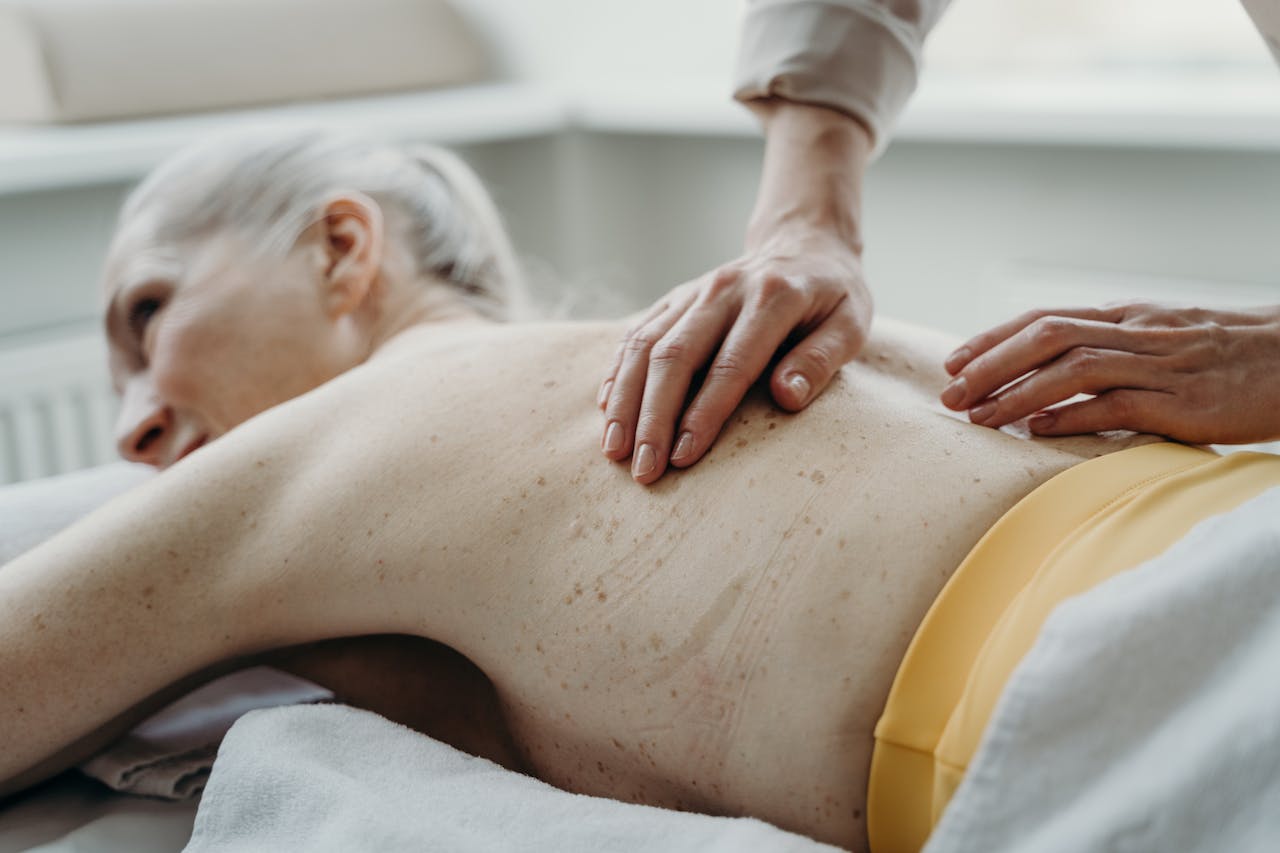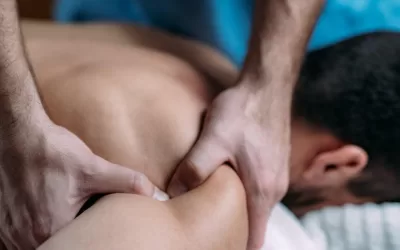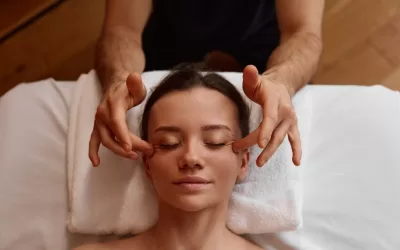Discover the most effective approach for managing scoliosis as we delve into the debate between Structural Integration and traditional therapies. With scoliosis affecting millions globally, understanding which treatment yields superior results is crucial. This blog post will compare the benefits, outcomes, and considerations of Structural Integration versus conventional treatments for scoliosis. By examining the effectiveness, side effects, and long-term impact of each method, readers can make informed decisions regarding their scoliosis management. Stay tuned to explore the nuances of Structural Integration and traditional therapies in addressing scoliosis to determine what works best for this prevalent condition.
Understanding Scoliosis
Scoliosis is a condition characterized by an abnormal lateral curvature of the spine, leading to a deviation from the normal spine’s straight alignment. Adolescent idiopathic scoliosis is the most common type, usually diagnosed during growth spurts in puberty when rapid skeletal changes occur. This condition can have a significant impact on posture, potentially causing back pain and affecting overall spinal structure.
Early detection of scoliosis is crucial as it allows for timely intervention to prevent further progression of the spinal curvature. Treatment options such as bracing play a vital role in managing scoliosis, especially in adolescents with developing curves. By addressing these issues early on, individuals can maintain better spinal health and reduce the risk of complications associated with severe curvatures.
Symptoms
Common symptoms of scoliosis include asymmetrical shoulders or waist, uneven hips, or one shoulder blade that appears more prominent than the other. These symptoms can vary in severity depending on the degree of spinal curvature present. Early recognition of these signs is essential for prompt diagnosis and treatment initiation to prevent the worsening of the condition over time.
Causes
The causes of scoliosis can vary, with some cases linked to genetic factors while others may result from spinal abnormalities or neuromuscular conditions. Genetics play a significant role in the development of scoliosis, especially in cases where family history indicates a predisposition to the condition. Spinal abnormalities such as misshapen vertebrae or abnormal growth patterns can also contribute to the onset of scoliosis.
Traditional Treatments
Traditional treatments for scoliosis often involve a combination of approaches, including physical therapy to improve muscle strength and flexibility around the spine. While physical therapy can help manage symptoms and improve mobility, it may have limitations in correcting severe spinal curvatures. Other traditional treatments may include exercises focused on improving posture and supporting spinal alignment.
Surgery and Bracing
In severe cases of scoliosis where conservative treatments are ineffective, surgery may be recommended to correct the spinal curvature and stabilize the spine. Surgical interventions aim to realign the spine and prevent further progression of the curve. Bracing is another common approach used in managing scoliosis, particularly in adolescents with moderate curves. While bracing can be effective in preventing curve progression, there are risks associated with surgical procedures that need to be carefully considered before proceeding.
Structural Integration Explained
Structural Integration works on scoliosis by interacting with the body’s alignment and flexibility. The hands-on approach involves finger pressure and manipulation techniques to enhance proprioception and posture. Sessions aim to refine body awareness and improve postural maintenance.
An example study demonstrated Structural Integration’s effectiveness in reducing spinal curves and enhancing overall function. This showcases how this technique can bring tangible benefits to scoliosis patients. Through a series of sessions, Structural Integration helps individuals develop a better sense of body alignment and movement patterns.
Structural Integration was founded by Ida Rolf, who emphasized the importance of structural integration for overall well-being. Her principles revolved around aligning the body properly to promote optimal function. Over time, Structural Integration has evolved into a respected therapeutic practice focused on improving physical alignment and movement.
Structural Integration sessions involve a hands-on approach that targets specific areas of tension and misalignment in the body. Practitioners use manipulation techniques to release restrictions and improve overall balance. The holistic nature of Structural Integration methodology considers the interconnectedness of the body’s systems, aiming to restore natural harmony.
The unique benefits of Structural Integration for scoliosis patients include improved posture, reduced pain, and enhanced mobility. When combined with traditional therapies like physical therapy or bracing, Structural Integration can offer comprehensive support for scoliosis management. Patients often experience an overall enhancement in their quality of life through increased comfort and ease of movement.
Structural Integration for Scoliosis
Structural Integration, a form of manual therapy, can improve posture and alleviate pain linked to scoliosis by addressing body imbalances. By focusing on enhancing proprioception and body awareness, Structural Integration aids in correcting spinal curvature for a more aligned spine. This technique also enhances hip and shoulder flexion, contributing to better spinal structure alignment.
Addressing Symptoms
Structural Integration targets specific symptoms of scoliosis through its personalized approach to symptom management. By working closely with individuals, Rolfers can tailor sessions to alleviate pain and discomfort associated with the condition. The long-term effects of Structural Integration include sustained symptom alleviation, leading to improved quality of life for scoliosis patients.
Case Studies
Real-life case studies demonstrate the effectiveness of Structural Integration in treating scoliosis. These success stories showcase how Structural Integration has positively impacted the lives of individuals dealing with the condition. From reducing pain to improving mobility and overall well-being, these cases highlight the diverse range of scoliosis instances that have benefited from Structural Integration.
Comparing Structural Integration and Traditional Therapies
Effectiveness
Structural Integration, a type of manual therapy, focuses on improving body alignment through soft tissue manipulation. In contrast, traditional therapies for scoliosis often involve exercises and bracing methods. Research indicates that Structural Integration’s refined proprioception techniques can enhance body awareness in scoliosis patients, potentially leading to better outcomes.
Studies comparing the effectiveness of Structural Integration with traditional therapies have shown promising results. Structural Integration’s emphasis on whole-body interaction and alignment has been praised for its ability to address not just the symptoms but also the root causes of scoliosis. Patients undergoing Structural Integration have reported improvements in back pain and increased shoulder flexion, highlighting the therapy’s comprehensive approach to treating scoliosis.
Patient testimonials further support the effectiveness of Structural Integration in managing scoliosis. Many individuals have shared their positive experiences with Structural Integration, noting significant improvements in posture, mobility, and overall comfort levels. The personalized care provided by Structural Integration practitioners plays a crucial role in tailoring treatment plans to meet each patient’s unique needs, contributing to the therapy’s success rate.
Benefits
- Enhanced body awareness through refined proprioception
- Comprehensive approach addressing root causes of scoliosis
- Improved back pain management and shoulder flexion
- Personalized care from skilled Structural Integration practitioners
Limitations
Despite its benefits, Structural Integration may not be suitable for all scoliosis patients. Some limitations include the intensive nature of the therapy, which may not be suitable for individuals with certain medical conditions or physical limitations. The cost of Structural Integration sessions can be a barrier for some patients seeking alternative treatments for scoliosis.
Individual assessment is crucial in determining the suitability of Structural Integration for scoliosis treatment. Practitioners must carefully evaluate each patient’s condition, medical history, and treatment goals to ensure that Structural Integration is an appropriate choice. By addressing these limitations proactively, practitioners can optimize the effectiveness of Structural Integration in managing scoliosis.
Complementing Traditional Therapies with Structural Integration
Structural Integration, an alternative treatment, can significantly enhance the outcomes of traditional therapies for scoliosis. By incorporating manual therapy techniques unique to Structural Integration, individuals with scoliosis can address soft tissue imbalances effectively. This approach also focuses on refining proprioception, improving body awareness crucial for managing scoliosis.
Collaborating with a skilled Structural Integration practitioner allows for the development of personalized plans that integrate whole-body interventions. These interventions go beyond mere symptom management and delve into addressing the root causes of scoliosis. By combining Structural Integration bodywork with specific exercises targeting posture enhancement and back pain reduction, individuals experience comprehensive care tailored to their unique needs.
Surgery Alternatives
- Structural Integration serves as a compelling non-surgical alternative in the management of scoliosis.
- It has the potential to reduce the necessity for surgical interventions by addressing underlying issues through manual therapy techniques.
- Moreover, Structural Integration plays a crucial role in both pre and post-surgery care, aiding in better recovery and long-term results.
Enhancing Bracing
- Integrating Structural Integration into scoliosis treatment can amplify the effectiveness of bracing techniques.
- The synergy between Structural Integration and bracing enhances the overall outcomes for scoliosis patients.
- By combining the benefits of Structural Integration’s manual therapy with the support provided by bracing, individuals receive a holistic approach to managing scoliosis.
Structural Integration as a Holistic Approach
Structural Integration offers a holistic approach to treating scoliosis by viewing the body as an interconnected whole, not just focusing on the spine. The manual therapy techniques used in Structural Integration aim to enhance body alignment, mobility, and overall function by refining proprioception. These techniques help individuals with scoliosis experience improved posture and movement patterns.
The core idea behind Structural Integration is to tap into the body’s innate ability to heal and adapt. By avoiding invasive interventions such as bracing or surgery, Structural Integration emphasizes empowering the body to naturally correct imbalances. This approach promotes long-term benefits by addressing the root causes of scoliosis.
Structural Integration practitioners play a crucial role in guiding individuals through personalized sessions that include bodywork, targeted exercises, and lifestyle adjustments. By tailoring interventions to each person’s unique needs, practitioners can help improve outcomes for scoliosis patients by promoting better posture and mobility.
Mind-Body Connection
In Structural Integration therapy, there is a strong emphasis on the mind-body connection. Emotional well-being plays a significant role in influencing physical alignment, especially in conditions like scoliosis. By addressing emotional stressors and promoting mental wellness, Structural Integration aims to create a positive impact on physical health.
The holistic nature of Structural Integration allows it to address both mental and physical aspects of scoliosis. Through hands-on manipulation and mindful awareness, individuals undergoing Structural Integration therapy can experience improvements not only in their posture but also in their overall well-being.
Long-term Benefits
Structural Integration offers long-term benefits for scoliosis patients by promoting sustainable improvements in posture and alignment. Regular sessions can help maintain spinal alignment, reducing discomfort and enhancing mobility over time.
Moreover, Structural Integration has preventative aspects that can slow down or even halt the progression of scoliosis. By addressing imbalances early on, individuals can potentially prevent worsening curvature of the spine and related symptoms.

Patient Testimonials
Client testimonials play a crucial role in highlighting the effectiveness of rolfing for scoliosis. Many clients have reported significant improvements in their symptoms after sessions with skilled practitioners. These firsthand accounts provide real-life evidence of the positive outcomes experienced through rolfing.
One example is a client who tried various alternative treatments for scoliosis without success. However, after starting rolfing sessions, they found relief and improved mobility. This showcases how rolfing can offer a unique solution for individuals struggling with scoliosis where other methods may have fallen short.
Client feedback not only demonstrates the ability of rolfing to help with scoliosis but also guides others towards considering this approach. Research supports the positive effects of manual therapy on scoliosis patients, further solidifying the value of client testimonials in showcasing rolfing as a viable treatment option.
Expert Opinions
Practitioners and researchers have analyzed various studies to determine the effectiveness of rolfing and traditional therapies for scoliosis in adults. By interviewing experienced practitioners, valuable insights have been gathered on which methods yield better outcomes for clients with scoliosis. Combining traditional therapies with rolfing techniques has shown promise in enhancing the ability to assist scoliosis patients effectively.
The discussion around whether specific exercises or hands-on methods work better for each individual client is crucial. Tailoring treatment based on the unique condition and needs of the client can significantly impact the success of managing scoliosis. This personalized approach acknowledges that what works for one person may not be as effective for another, emphasizing the importance of customized care.
In navigating the treatment landscape for scoliosis, it becomes evident that a multidisciplinary approach may offer the most comprehensive care for patients. Integrating different methods and therapies allows practitioners to address various aspects of the condition, potentially leading to improved outcomes for individuals with scoliosis. By tapping into a diverse range of techniques, practitioners can cater to the specific requirements of each client more effectively.
Furthermore, ongoing research and analysis play a vital role in shaping the future of scoliosis treatment. The ability to adapt practices based on emerging evidence ensures that clients receive the most up-to-date and beneficial care available. This commitment to staying informed about advancements in therapeutic approaches underscores a dedication to providing optimal support for individuals dealing with scoliosis.
Making the Decision for Scoliosis Treatment
Assess the severity of scoliosis through a professional diagnosis to understand the impact of spinal curvature. This evaluation helps determine the best course of treatment based on the extent of the condition. Understanding how scoliosis affects daily life is crucial in devising an effective treatment plan.
Traditional therapies like bracing play a significant role in managing scoliosis, especially in cases of adolescent idiopathic scoliosis. Bracing aims to prevent further progression of the lateral curvature by providing support and stability to the spine. It is essential to consider the effectiveness of such methods when deciding on treatment options.
Exploring alternative treatments such as manual therapy and targeted exercises can offer additional benefits for individuals with scoliosis. These approaches focus on improving posture, strengthening back muscles, and alleviating back pain associated with the condition. Manual therapy techniques can help realign the spine, while specific exercises target muscle imbalances to enhance overall spinal health.
When weighing different treatment options, it is important to consider both their pros and cons. While traditional therapies may focus on straightening the spinal curves, alternative treatments often emphasize managing scoliosis through lifestyle modifications and therapeutic interventions. Each approach comes with its own set of benefits and considerations that should be carefully evaluated before making a decision.
Consultation Tips
- Seek Structural Integration consultations for personalized treatment plans.
- Ask about experience with treating scoliosis during consultations.
- Emphasize open communication with Structural Integration practitioners for effective collaboration.
Finding a Practitioner
Finding a reputable Structural Integration practitioner involves researching qualifications and experience. Look for certifications and reviews from previous patients as indicators of expertise. Consider factors such as location, cost, and compatibility when selecting a practitioner for Structural Integration treatment. The relationship between practitioner and patient plays a crucial role in achieving positive outcomes in Structural Integration therapy.
Summary
In weighing Structural Integration against traditional therapies for scoliosis treatment, it becomes evident that both approaches offer unique benefits. Structural Integration’s holistic nature and focus on the body-mind connection provide a complementary avenue to address the complexities of scoliosis. Patient testimonials and expert opinions underscore the positive impact Structural Integration can have in conjunction with conventional treatments. By considering Structural Integration as a supportive therapy, individuals with scoliosis may experience enhanced well-being and improved outcomes.
For those navigating the realm of scoliosis treatment, exploring the integration of Structural Integration alongside traditional methods could offer a promising path towards holistic healing. Understanding the potential synergies between these approaches empowers individuals to make informed decisions tailored to their unique needs. Embracing a comprehensive treatment strategy that encompasses both Structural Integration and conventional therapies may pave the way for more effective and personalized care.
Frequently Asked Questions
1. What is scoliosis?
Scoliosis is a condition characterized by an abnormal sideways curvature of the spine. It can vary in severity and may cause discomfort or impact mobility depending on the degree of curvature.
2. How does Structural Integration differ from traditional therapies for scoliosis?
Structural Integration is a form of bodywork that focuses on improving alignment and balance in the body through deep tissue manipulation. Unlike traditional therapies, Structural Integration aims to address not just symptoms but also underlying structural imbalances contributing to scoliosis.
3. Is Structural Integration effective for treating scoliosis?
e individuals with scoliosis have reported benefits from Structural Integration, such as improved posture and reduced pain. However, the effectiveness of Structural Integration may vary depending on individual factors such as the severity of scoliosis and overall health condition.
4. Can Structural Integration be used in conjunction with traditional therapies for scoliosis?
Yes, Structural Integration can complement traditional therapies for scoliosis treatment. By addressing structural imbalances and promoting better alignment, Structural Integration may enhance the overall effectiveness of a comprehensive treatment plan that includes traditional approaches like physical therapy or bracing.
5. Are there any risks or contraindications associated with Structural Integration for scoliosis?
While Structural Integration is generally considered safe when performed by a trained practitioner, individuals with certain medical conditions or sensitivities may experience discomfort during or after sessions. It’s important to consult with a healthcare provider before starting Structural Integration or any new treatment regimen for scoliosis.
Elevating Scoliosis Management with Structural Integration: Achieve Structural Balance with MedicinEvolution’s Revolutionary Approach!
Are you or someone you know navigating the complexities of scoliosis, seeking relief from pain, or aspiring to improve posture and body alignment? MedicinEvolution stands at the forefront of integrating Structural Integration into scoliosis management and structural integration, offering individuals a path to optimal health and bodily harmony. By employing the transformative techniques of Structural Integration, MedicinEvolution directly addresses the underlying imbalances caused by scoliosis, initiating a holistic healing process. Bid adieu to the discomforts of scoliosis, including chronic pain and the uneven stresses on your body—as MedicinEvolution customizes its approach to meet your body’s specific needs, guiding you towards significant relief and structural correction. Their personalized Structural Integration sessions are crafted to guide you beyond the pain and restrictions scoliosis brings, unlocking your body’s true potential.
If scoliosis has been a source of persistent pain, discomfort, or has limited your movement and quality of life, MedicinEvolution’s innovative strategy, combining Structural Integration with advanced techniques for scoliosis care, is precisely what you need. Don’t allow scoliosis to set the limits of your physical well-being—take the step and schedule your consultation with MedicinEvolution now! Embark on a journey with their Structural Integration-centered treatments and begin moving towards a more balanced, pain-free, and optimally aligned life. Your body, now liberated from the challenges of scoliosis, will celebrate the extraordinary transformation!





